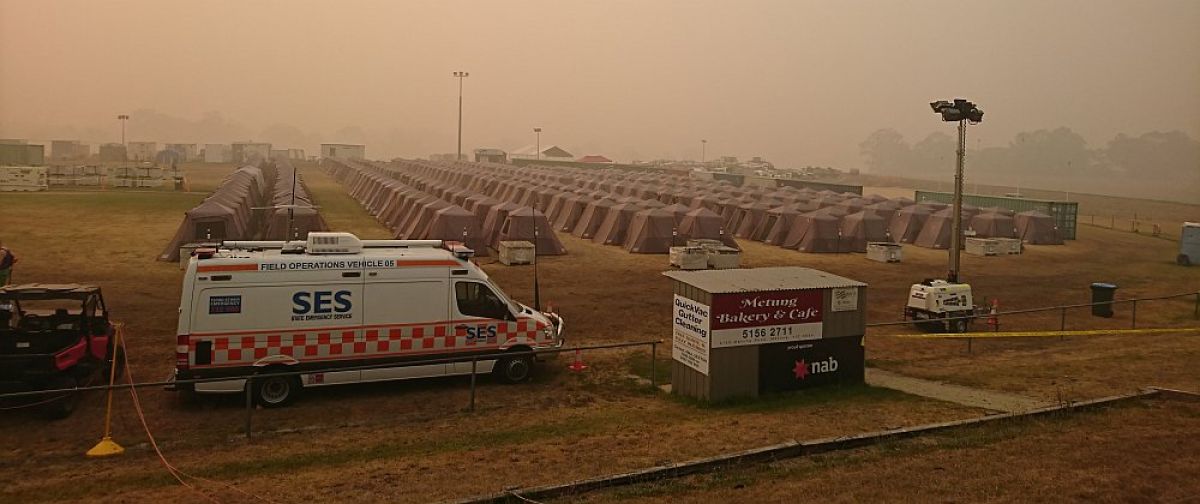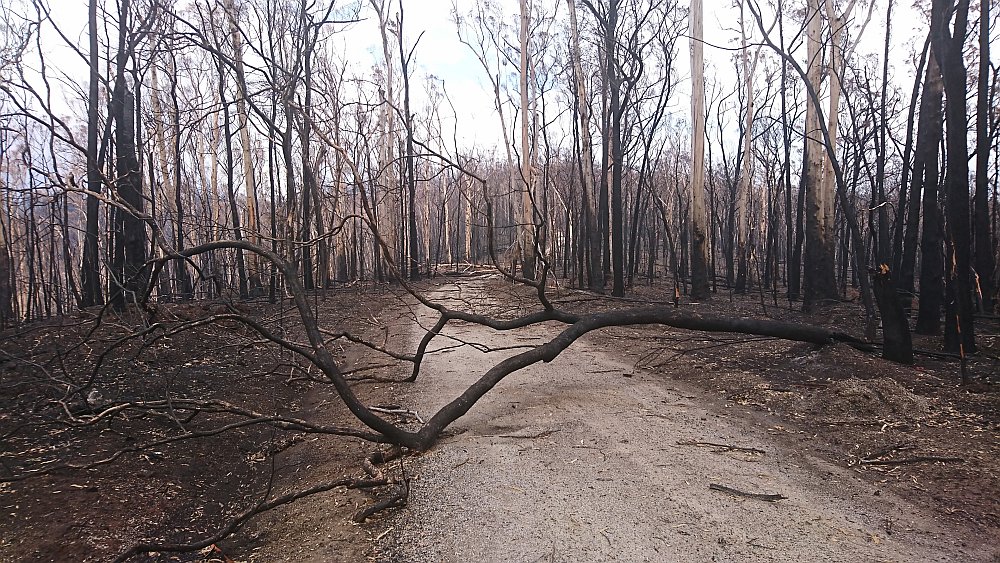
'Here's a quick snapshot of my experiences as both a trainee general firefighter and a Logistics member for the State Control Centre.
So, what does a general firefighter do?
If you've got images in your head of us firing off hoses and doing heroic rescues of property and people, it's not always the truth.
For bushfires, in Forest Fire Management Victoria we resort to something called dry firefighting as the fires are usually too extensive and we won't have enough water to put them all out.
For dry firefighting, we rely on creating a solid mineral earth break around the existing fires whether it be an existing road, a trail created by a bulldozer or a manually created rakehoe line.
This works because without fuel, the fire can't burn, so once we split off future fuel, we just need to patrol and make sure it doesn't spot over the break.
Occasionally we also do backburning or burning out with a drip torch to remove fuels between the fire and the fire break.
For backburning, if the fire looks like it's moving towards the break, we may burn from the break backwards, if conditions are favourable to stop the fire from reaching the break uncontrolled. Burning out is burning off excess vegetation to ensure that there isn't too much fuel left next to the break.
Similarly, the biggest danger we face isn't necessarily the fire, it's hazardous trees, which can drop at any moment after the fire happens.

Hence, one of our first priorities when the fire has calmed down is removing hazardous trees from near the breaks where we are working and along the roads so we can reopen roads and forest tracks.
On dangerous fire days we may get re-tasked to asset protection when it is unsafe to be out on the actual line but we can do our best to protect people’s houses and community assets.
This is usually not our main bread and butter as the CFA is responsible for fires on private land whereas Forest Fire Management Victoria is responsible for fires on public land.
The photos I’ve included with this story from my Buchan/Nowa Nowa deployment highlight what we've encountered, including our base camp accommodation.
My photos from my Buchan/Nowa Nowa deployment






I couldn't have done my deployment without all the people helping get the base camp together and sorting out the portaloos, portashowers and catering.
Now, what does an Incident Management Team (IMT) do?
Behind any great deployment is an excellent IMT. They do the coordinating of where, when and what personnel are required; where, when, and what materials/transport options are needed and manage the flow of intelligence and information about what's happening. My role is in Logistics - making sure things are where they need to be when they need it.
Within the State Control Centre, this is the high-level oversight role (in comparison to a local Incident Control Centre, which does all the nitty gritty details for each incident's logistics) mainly focused on occasional accommodation, ground support with vehicles, and a large part is liaising with the State Air Desk to organise flights.'
Page last updated: 19/02/20